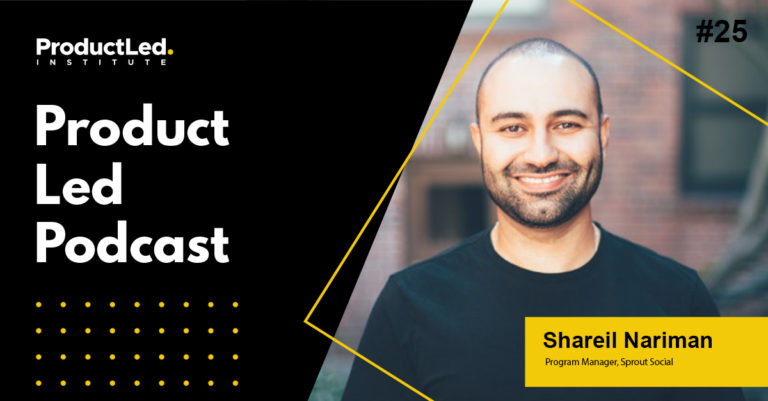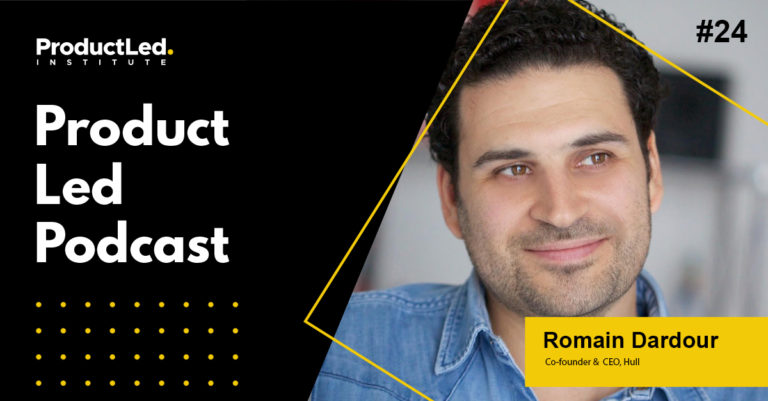Are you tired of building products or features that nobody seems to care about? What if I told you that there is an approach to developing products that can help you acquire and convert more users?
In this post, I discuss the “jobs-to-be-done” framework approach to help you better understand your customers and the thought processes that lead them to adopt a product. I also clear up the confusion around jobs-to-be-done and reveal 2+1 powerful ways to acquire and convert more customers using the jobs-to-be-done framework.
Common challenges that product managers face
Before we dive into the jobs-to-be-done approach in more detail, let's take a look at the potential challenges that the approach can help solve.
Companies are understandably enthusiastic when they have ambitious new products that they hope will generate consumer interest. These products will inevitably convey exciting features, new functionalities, and integrations. They are typically based on what the founders are confident will make their product stand out in a crowded marketplace.
Yet, all this research and development doesn't always guarantee instant success when the product hits the market. Immediate consumer feedback might tell you that the product is perceived as being “too expensive,” or too difficult to use. At the same time, viral and top of funnel campaigns might report losses from the get-go.
Here are some of the most common marketing and product challenges you might face when launching a product that doesn’t do as well as you hoped:
- You build based on requests
- You built stuff nobody cares about
- Your churned users tell you “it’s too expensive” or “I am not using it any more”
- You are losing money in TOFU campaigns
- You consider competition only tools with similar features and pricing
- Your product focuses more on shipping stuff than researching stuff
- You find yourself in the dark about what will actually move the needle
So, what is the solution to these challenges? How do you realign your product in the marketplace and make it stand out next to rivals? And, how do you move the needle to trigger a positive outcome?
The short answer is by engaging with your customer base. A Harvard study was carried out a few years ago in which a professor was hired by a massive fast-food chain. They were given one task – to increase the sales of milkshakes by 15%.
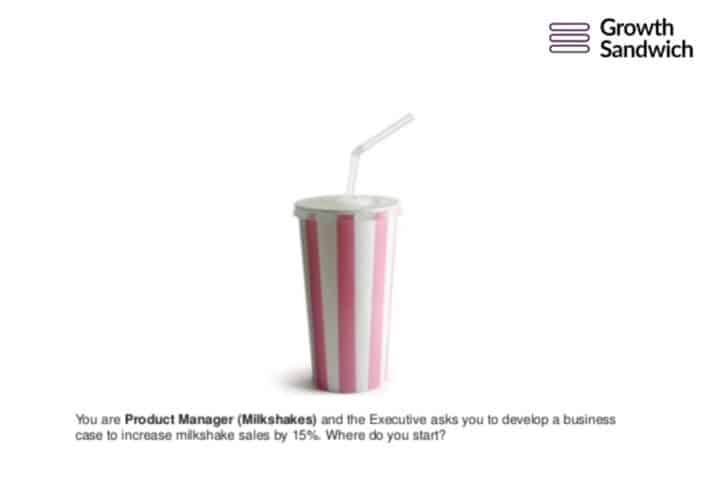
Having pulled out all the stops to make the shake different (from adding and removing sweetness to changing portion sizes and prices), they decided to concentrate on more personalized techniques.
The new employees started to ask customers what it was about the milkshakes that appealed to them. The results stopped them in their tracks. They were “filling up” on these shakes in between meals to satisfy their food cravings. When asked why they chose milkshakes over snack foods, the general consensus was that they were avoiding crumbs and greasy fingers while on the move.
Curious researchers were also told how it was physically impossible to drive a car while trying to eat food, especially compared to the relative ease by which they could consume the milkshake. The milkshake was the perfect on-the-go solution.
The researchers concluded that the competition wasn't a rival fast-food company's milkshake product. Rather, they were keeping the customer’s stomach full until they could enjoy their next meal. This study is a great example of the jobs-to-be-done framework.
What is jobs-to-be-done?
The jobs-to-be-done concept follows a specific timeline of thoughts that customers go through when deciding to use a new product to get the job done.
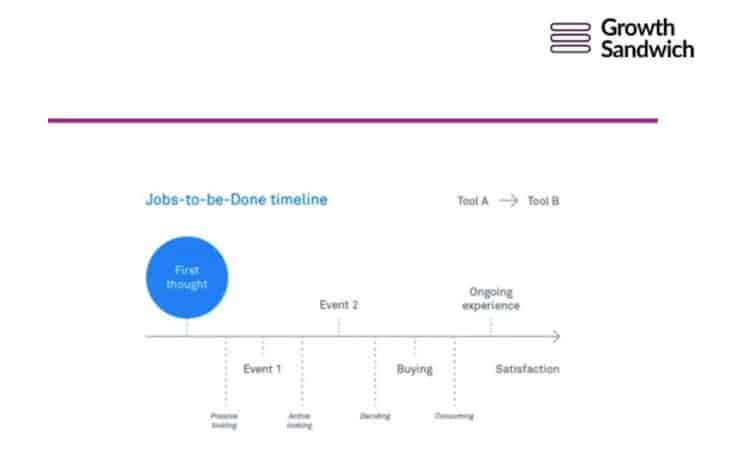
When we think of something we need to do, or an action we feel compelled to perform, we make an almost subconscious series of decisions.
Forces are at play behind the scenes, which determine our cause of action thereafter. Positive forces, such as "pull" and "push" are directing us towards one goal. Yet, they are often being countered by the opposing forces of habit, along with the existence of inertia or anxiety, which can stop us from moving forward.
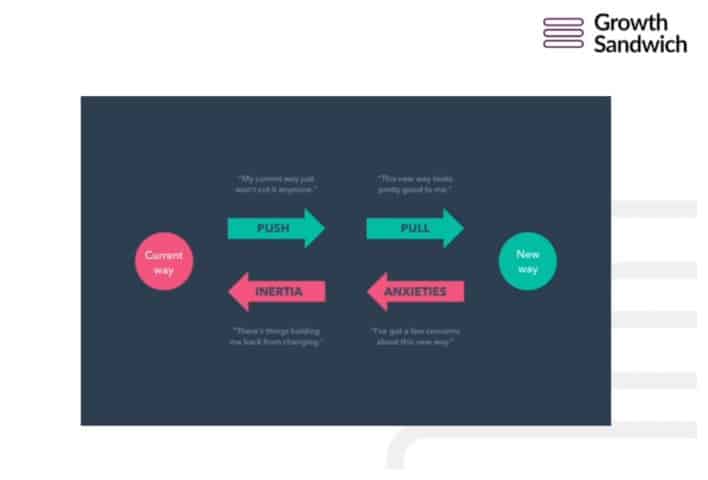
A push force is an overriding urge to get something done such as seeking a resolution to a problem. This will be habitual to a certain extent. Unfortunately, habits are driven by a sense of fear such as a fear of change or fear of the unknown.
The greater need is to focus on the job. This is the game-changer, because it makes you rethink everything from the roadmap to positioning and intersections.
It’s important to remember that technically, jobs-to-be-done is just a theory. But like many theories, it evolved incredibly fast. It gained traction before anyone really understood what it was about and how it can benefit you, your company, your product, and product management.
Here are three ways in which you can put the jobs-to-be-done theory into practice without disrupting your current product management strategy.
Tactic 1 - Interview Power/Existing Users
By interviewing power users, you can learn many invaluable lessons. For example, you can find out how individual users have used a specific solution in the past and learn from the product they switched from before getting yours.
You also need to know why someone likes your product. What do they identify with? Why have they adopted the product, and what works for them?
Here are a few reasons why you should interview power users:
- To discover use cases you never expected
- To learn what they switched from
- To let them explain why they like your product
- To identify what made them power users in the first place
Think back to the milkshake story and how sometimes you can be completely blown away by a response. You may assume users like your product because of one or two obvious factors, yet it turns out to be something completely different.
You also have to discover what made them "power users" in the first place. What are the forces around their decision and what's the ideal user profile? Equipped with this information, you can build deeper empathy with your customers.
So, how can you interview power users?
Start by designing a robust recruitment strategy that focuses on power users, who are very engaged and have been using your product for some time. By interviewing people (and recording five to six exchanges on average per use case), you build a more comprehensive picture.
Users’ feedback can help supply 70 - 80% of the understanding needed to make better marketing decisions. It's this research that will act as the cornerstones of more targeted marketing plans in the future.
By clustering users' feedback based on use case, patterns will begin to emerge. A degree of commonality will effectively take shape when observing contrasting group bubbles.
You can then feed this to your marketing department, instantly equipping them with a more defined customer profile to work with. This can help to create targeted landing pages while bridging a value gap.
The "value gap" is the discrepancy between what your power users and new customers are saying about your product. It's absolutely imperative that you present your solutions in a way that convinces future customers that your product can actually deliver.
Tactic 2: Interview New Users
In addition to interviewing existing users, you should also take time to interview new users. It’s crucial to find out what they switched from, what their prompts were, and the applied thinking behind their decisions.
It’s in your best interest to pinpoint the critical moments in the jobs-to-be-done timeline. You should also use the information you gather to figure out discrepancies between what new users say with those of your power users.
A subset of new users will provide answers to your questions that differ from the power users. Doing this will require some persuasion since new users are traditionally the ones asking the questions, not answering them!
Similarly, these inquiry lines should be divided into use cases and repeated in a timely fashion. After all, we're talking about a living, breathing document, not a one-off process.
Focus on the switch behavior, which highlights what you're marketing, and how you're positioning your product. The objective is to convince new users to continue using your product rather than adopting a competitor’s product.
If you want to interview fresh users, here are a few suggestions:
- Mask it as a demo to a subset of users
- Categorize them based on their use case
- Perform a steady number of interviews per month to a sample set of users
- Record and transcribe the conversations
- Focus on the switch behavior
- Let them speak but lead the conversation
By leveraging the data acquired from new users during the interview stage, the value gap will be both identified and bridged, and you'll use it to either qualify or disqualify users.
Tactic 3: Interview Churned Users
Churned users are the customers who have ceased to do business with you, or no longer express a desire to use your product.
So, why would the opinions of those who have unsubscribed to your product be worthwhile?
Since they've made a conscious decision to use a rival's product over yours, you need to understand the thinking behind this. They may argue that your product is too expensive. But then they need to elaborate on this. "Expensive" as an excuse is a very relative concept.
You need to unravel what happened to make the user stop using your product and turn reasoned feedback into positive actions.
Use the "jobs-to-be-done" timeline to establish the "push." With this focus group revealing what changed their mindsets, coupled with the knowledge you possess regarding the power and new users, you can now find the discrepancies among the three groups.
It may be difficult to speak to churned users since many of them will be customers who are unhappy with your product. Nonetheless, it's imperative to gauge these openly negative opinions to help restructure your product management framework.
Interviewing churned users should be a key part of your cancellation process. You might even be able to convince them to change their minds before they make the final decision to abandon your product. One way that you can do this is by incentivizing them with a discount for re-subscribing.
Churned users offer priceless insights. The singular most important information to obtain from churned users is what they saw as your product’s failure.
When interviewing churned users, here are a few things to keep in mind:
- Don’t fall for lies any more and build what matters (roadmap impact)
- Gain empathy and clarity on what needs to be built or prioritized
- Prevent some of them
- Compare them with the rest of the interviews and gain clarity on how to solve every problem
Jobs-to-be-done principles provide foundations for product management and this approach can help you to create better products that users adopt and continue to use. I hope that this post gives you some clarity on just how beneficial the jobs-to-be-done approach is on your product’s performance.





